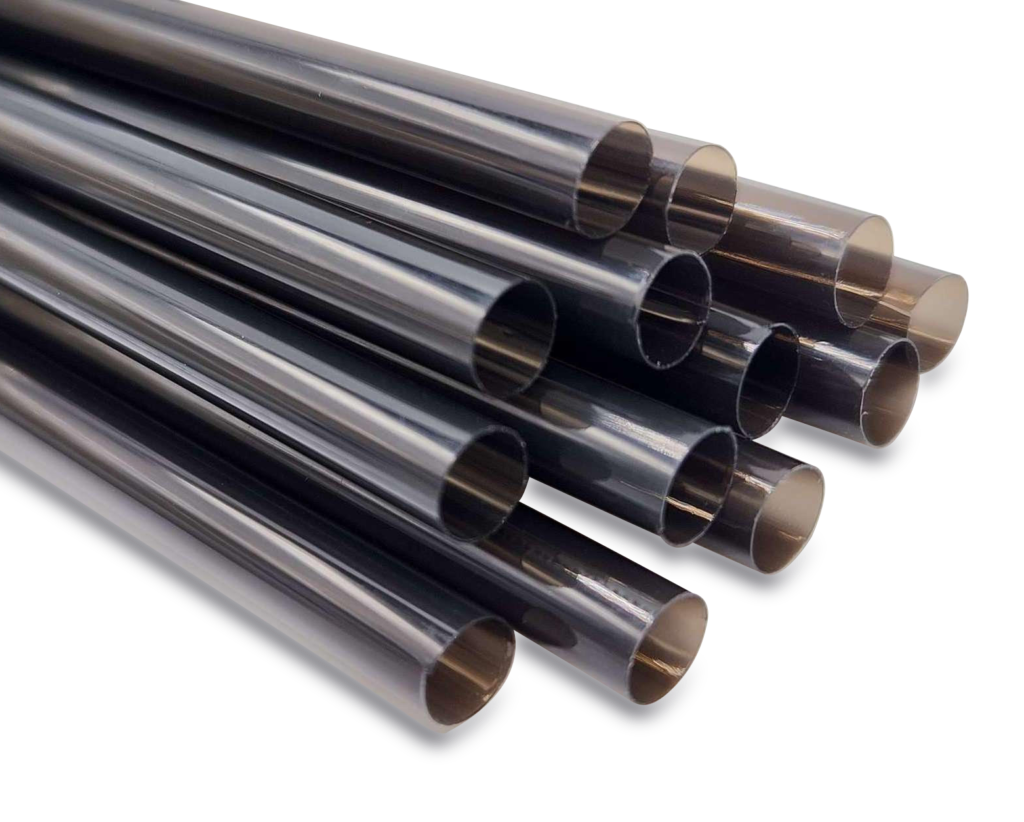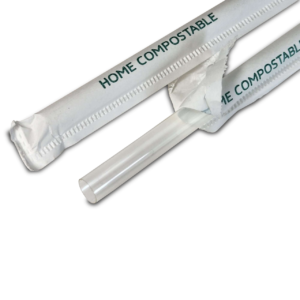Sustainable drinking straws are made from a range of materials, each with its own benefits and considerations. In this article, we will explore various materials used in sustainable straws, compare their properties, discuss factors to consider when choosing one and provide guidance on caring for these eco-friendly options. We will also highlight where to buy sustainable drinking straws, including the emerging wood pulp straws produced by KonzaWare.
Introduction
In recent years, the demand for sustainable alternatives to plastic straws has grown significantly, driven by the desire to reduce plastic waste and its environmental impact. As we enter 2023, the focus on sustainability continues to shape the market for drinking straws. In this article, we will explore the top materials that provide the best sustainable drinking straws in 2023. By understanding the characteristics of these materials, you can make informed choices and contribute to a greener future.
The Importance of Sustainable Drinking Straws
Plastic straws have been a major contributor to plastic pollution, particularly in our oceans and marine ecosystems. By opting for sustainable drinking straws, we can actively combat this issue. Sustainable straws are made from materials that are either biodegradable or reusable, reducing the reliance on single-use plastics and minimizing environmental harm. By choosing the best sustainable materials, we can enjoy our beverages while treading lightly on the planet.
Top Sustainable Materials for Drinking Straws
Bamboo
Bamboo straws have garnered attention for their natural and renewable properties. Bamboo is a fast-growing plant that requires no pesticides or fertilizers, making it an eco-friendly choice. Bamboo straws are durable, reusable, and biodegradable, embodying the essence of sustainability. They also add an organic touch to your beverages, reminiscent of the natural world.
Stainless Steel
Stainless steel straws have gained popularity for their durability and reusability. They are made from food-grade stainless steel, which is resistant to corrosion and rust. Stainless steel straws are suitable for both hot and cold beverages, offering versatility for different drink choices. They can withstand regular use and are easy to clean, either by hand or in the dishwasher. With their sleek design, stainless steel straws provide a modern and stylish alternative.
Glass
Glass straws combine elegance with sustainability. Made from high-quality tempered glass, these straws are safe, non-reactive, and visually appealing. Glass straws do not leach any chemicals into beverages, ensuring a pure drinking experience. They are highly durable, resistant to breakage, and can be easily cleaned. With their transparency, glass straws allow you to enjoy the vibrant colors of your drinks. Whether sipping on a refreshing smoothie or a hot beverage, glass straws provide a sustainable and aesthetic choice.
Paper
Paper straws have evolved to offer improved sustainability without compromising functionality. These straws are typically made from responsibly sourced paper and use food-grade ink. Modern advancements have enhanced their durability, allowing them to withstand liquid for longer durations. Paper straws are biodegradable and compostable, breaking down naturally over time. They are an excellent choice for cold beverages, providing a sustainable alternative that reduces plastic waste.
Edible
Edible straws represent a creative and zero-waste solution to the plastic straw problem. Made from edible ingredients such as rice or seaweed, these straws are entirely biodegradable and compostable. Edible straws offer a unique drinking experience as they can be consumed along with your beverage. They are suitable for both hot and cold drinks, with various flavors and textures available. While their taste and texture may vary, edible straws provide a fun and eco-friendly option.
PLA and Corn Starch
Straws made from materials like polylactic acid (PLA) and corn starch are derived from renewable plant-based sources. PLA straws are biodegradable and compostable, breaking down naturally under appropriate conditions. Corn starch straws offer similar characteristics, providing an eco-friendly alternative to plastic. These straws are produced using sustainable manufacturing processes, making them a responsible choice for environmentally conscious consumers.
Wood Pulp (KonzaWare)
Wood pulp straws are an emerging sustainable option for drinking straws. Companies like KonzaWare produce straws made of biodegradable plastic created from sustainable wood pulp, which is derived from renewable sources. Wood pulp straws offer biodegradability and sustainability without compromising functionality. They feel and look like regular plastic straws. They are designed to be sturdy, providing a reliable and provide superior sipping experience that people are used to. With the growing focus on eco-friendly alternatives, KonzaWare biodegradable plastic straws contribute to reducing plastic waste since they become food for microorganisms and create healthy soil for plant life.
Comparing the Best Sustainable Materials
When choosing the best material for your sustainable drinking straw, several factors should be considered. Durability, biodegradability, versatility, aesthetics, and compatibility with different beverages play crucial roles in the decision-making process. Stainless steel and glass straws excel in terms of durability and longevity, making them ideal for long-term use. Bamboo and paper straws offer biodegradability and compostability, ensuring minimal environmental impact. Edible straws provide a unique and fun experience, while PLA and corn starch contribute to sustainable sourcing and production practices. KonzaWare straws are sourced from sustainable wood pulp and support a circular economy when they return to the earth. Consider your specific preferences, needs, and use cases to determine the best material for you.
Factors to Consider When Choosing the Best Sustainable Drinking Straw
When selecting the best sustainable drinking straw material, it’s important to consider various factors:
- Durability: Assess the durability of the material to ensure it can withstand regular use without compromising its functionality.
- Biodegradability: Opt for materials that are biodegradable, compostable, or edible to minimize environmental impact.
- Usability: Evaluate the material’s compatibility with different beverages, including hot and cold drinks.
- Aesthetics: Choose a material that aligns with your personal style and enhances your drinking experience.
- Environmental Impact: Consider the sustainability of the sourcing, production, and disposal processes associated with the material.
By evaluating these factors, you can select a sustainable straw material that meets your specific requirements and aligns with your values.
Caring for and Maintaining Sustainable Drinking Straws
Proper care and maintenance are crucial to prolonging the lifespan of sustainable drinking straws. Here are some general guidelines:
- Cleaning: Clean your straw after each use. Depending on the material, you can wash it by hand using warm water and dish soap or use a cleaning brush. Some materials, like stainless steel, are dishwasher-safe.
- Drying: Ensure your straw is thoroughly dried before storing it to prevent the growth of mold or bacteria. Air drying or using a straw drying rack is recommended.
- Storage: Store your straw in a clean and dry place to maintain its hygiene. Consider using a pouch or container specifically designed for straws to protect them from dust and damage.
- Maintenance: Regularly inspect your straw for any signs of damage or wear and replace it if necessary. Follow any additional care instructions specific to the material of your straw.
By following these care practices, you can maximize the lifespan and functionality of your sustainable drinking straw.
Where to Find the Best Sustainable Drinking Straws
Finding the best sustainable drinking straws is easier than ever, thanks to the growing availability of eco-friendly products. Here are some sources where you can find them:
- Local Stores: Check your local eco-friendly stores, zero-waste shops, or health food stores. They often carry a variety of sustainable drinking straws.
- Online Retailers: Explore online marketplaces and dedicated websites that specialize in eco-friendly products. You can find a wide range of sustainable straws, including those made from bamboo, stainless steel, glass, paper, and wood pulp.
- Eco-Friendly Brands: Many companies focus on producing sustainable alternatives to plastic straws. Research and support brands that prioritize eco-consciousness and sustainability in their products.
- KonzaWare: For biodegradable plastic straws, consider KonzaWare, a company known for its commitment to sustainable sourcing and production processes. You can purchase online or from a distributor near you.
By exploring these sources, you can find the best sustainable drinking straws that suit your preferences and contribute to a greener future.
By supporting businesses that prioritize sustainability, you can contribute to the growth of a more eco-friendly market.
Conclusion
As we move further into 2023, the importance of sustainable alternatives to plastic straws becomes increasingly evident. The best materials for sustainable drinking straws include bamboo, stainless steel, glass, paper, edible options, PLA and corn starch, and sustainable wood pulp. Each material offers unique advantages in terms of durability, biodegradability, aesthetics, and environmental impact. By considering factors such as compatibility, maintenance, and personal preferences, you can make an informed choice that aligns with your values and contributes to a more sustainable future.
FAQs
Are sustainable drinking straws more expensive than plastic straws?
-
- The cost of sustainable straws may vary depending on the material and brand. While some options may have a higher upfront cost, their durability and reusability often make them more cost-effective in the long run.
Can wood pulp straws be composted?
-
- Yes, wood pulp straws, such as those made by KonzaWare, are compostable. They can break down naturally and return to the environment without causing harm.
Are glass straws safe for children?
-
- Glass straws can be safe for children, but supervision is recommended, especially for younger children. Opt for glass straws made from tempered glass, which is more resistant to breakage.
How long do bamboo straws typically last?
-
- The lifespan of bamboo straws depends on various factors, including frequency of use and care. With proper maintenance, bamboo straws can last for several months or even up to a year.
Can stainless steel straws be used with hot beverages?
-
- Yes, stainless steel straws are suitable for both hot and cold beverages. They are heat-resistant and will not leach harmful chemicals into your drink.



